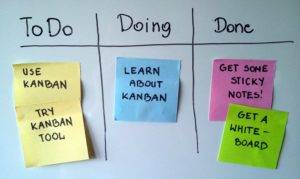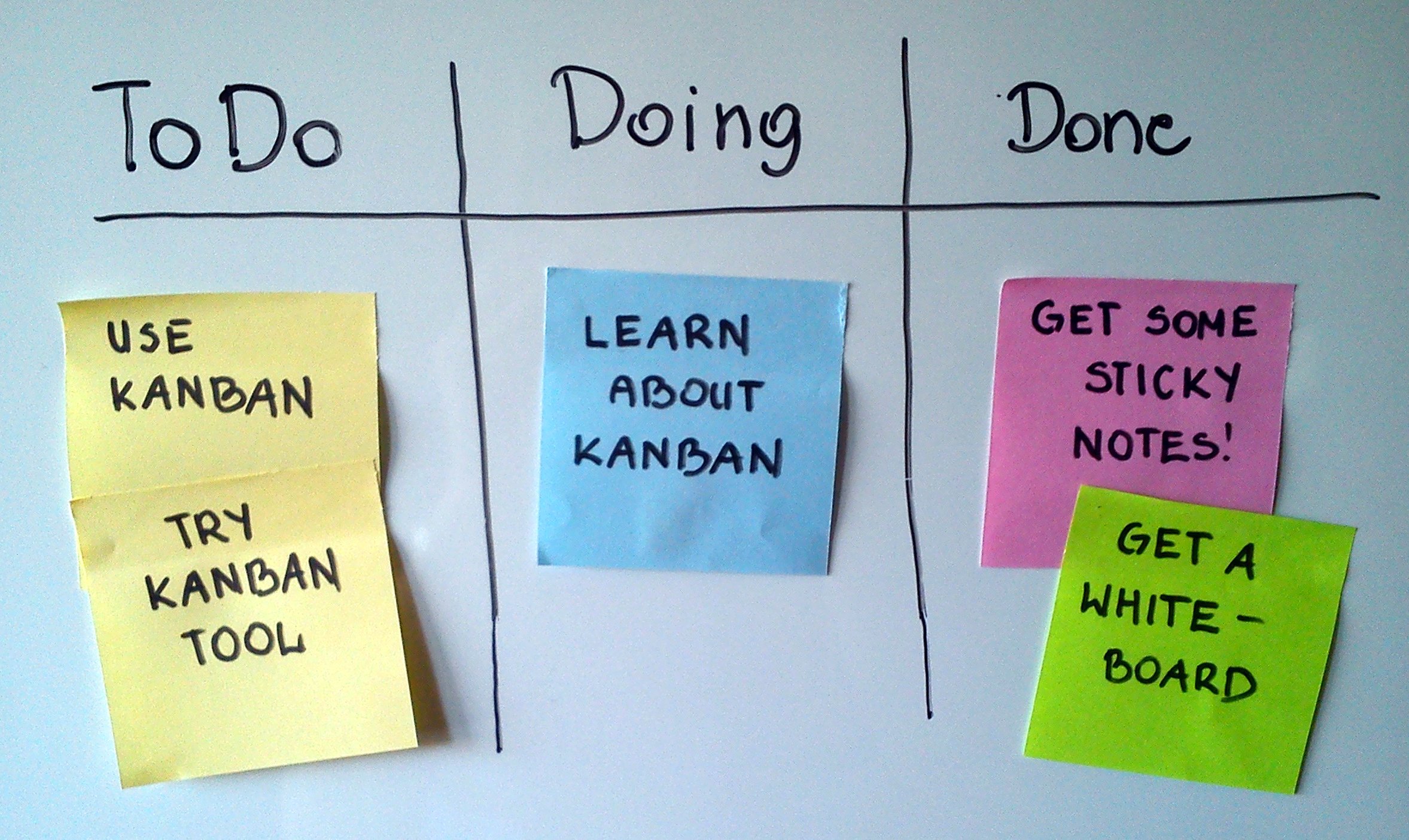Portfolio Kanban is exactly what it sounds like – applying the Kanban Method to manage work at portfolio level. Essentially, creating a system to manage options: epics, projects or any work at a level where it hasn’t been decomposed by a delivery team for implementation.
 There isn’t a huge amount of reference material out there specifically on building portfolio Kanban systems. SAFe provides one potential solution, and even if you weren’t to use it directly, it contains some things that you might consider. The reality is that each Kanban system is bespoke to the organisation building it. With that in mind, here are a few things to consider as you get started.
There isn’t a huge amount of reference material out there specifically on building portfolio Kanban systems. SAFe provides one potential solution, and even if you weren’t to use it directly, it contains some things that you might consider. The reality is that each Kanban system is bespoke to the organisation building it. With that in mind, here are a few things to consider as you get started.
- Who is involved in the management of the portfolio?
- How do you collate options, and who generates them?
- How big are these options? How can you identify ways to deliver value earlier?
Here are some ideas for how the Kanban Method can be applied in creating a portfolio management system.
- Start with what you do now – The chances are that you are going through some sort of process to decide what you work on. Try and use this as a starting point.
- Make options visible – This could be as simple as some post-its on a wall, or maybe an ALM tool of some kind. Either way, the portfolio should be made transparent to anyone wishing to understand it.
- WIP limits – This is obviously applicable to any work that is being actively implemented, but it’s also a good mechanism for ensuring you are limiting the number of options in the prioritisation process, reducing the investment of time in managing the portfolio.
- Actively manage flow – The focus should be put on moving options towards a point where they can be implemented. A regular review to try and identify bottlenecks in this process will be helpful.
- Well defined entry criteria – If your portfolio is to be managed with a pull system, it’s important to understand whether options are ready to be pulled into the next stage.
Cost of Delay (or opportunity cost) can be defined as the cost of having something at some point in the future versus having it now. In his seminal text, The Principles of Product Development Flow, Don Reinertsen calls it “the economic value of cycle time”. For the purposes of prioritising our portolio, we can use an extension of this referred to as CD3 or Cost of Delay Divided by Duration. Those of you familiar with SAFe will know it as WSJF or Weighted Shortest Job First. In this case we are weighting by Cost of Delay.
In order to calculate CD3, we take the Cost of Delay and divide it by the estimated time for delivery of the work (or duration). For a nice four step framework for calculating Cost of Delay, head to Black Swan Farming. Another working example can be found on the Leading Agile blog.
Calculating Cost of Delay requires you to make assumptions and to estimate value. These estimates will be prone to the same error we get when estimating implementation time. If you attempt to try and calculate Cost of Delay on a initiative you estimate will take a year, your results will be less accurate than if you were doing it on something you expect to take 3 months. It’s therefore sensible to find a way of keeping the work in your portfolio in manageable chunks that can deliver value quickly.
Photo credit: Wikipedia
